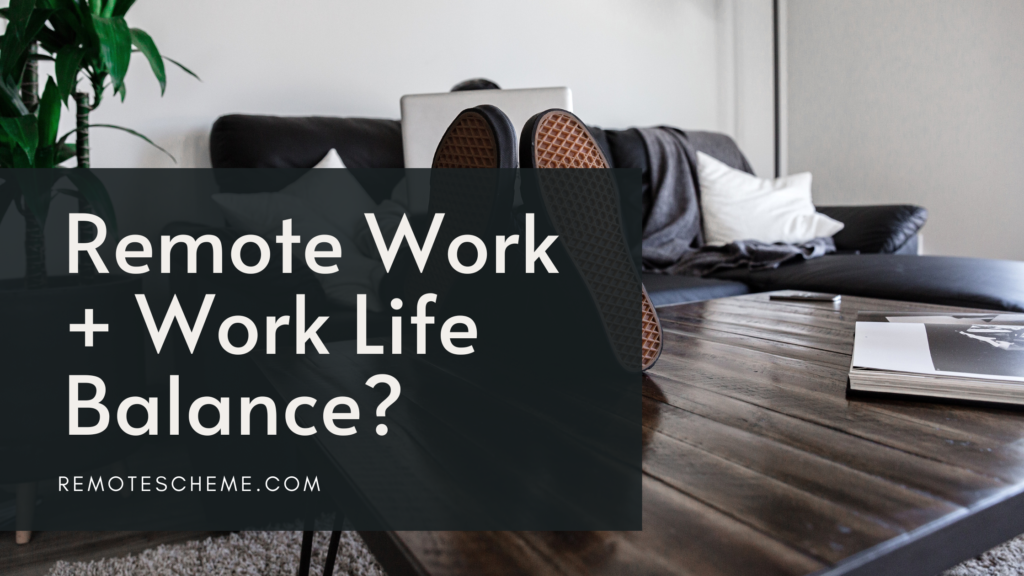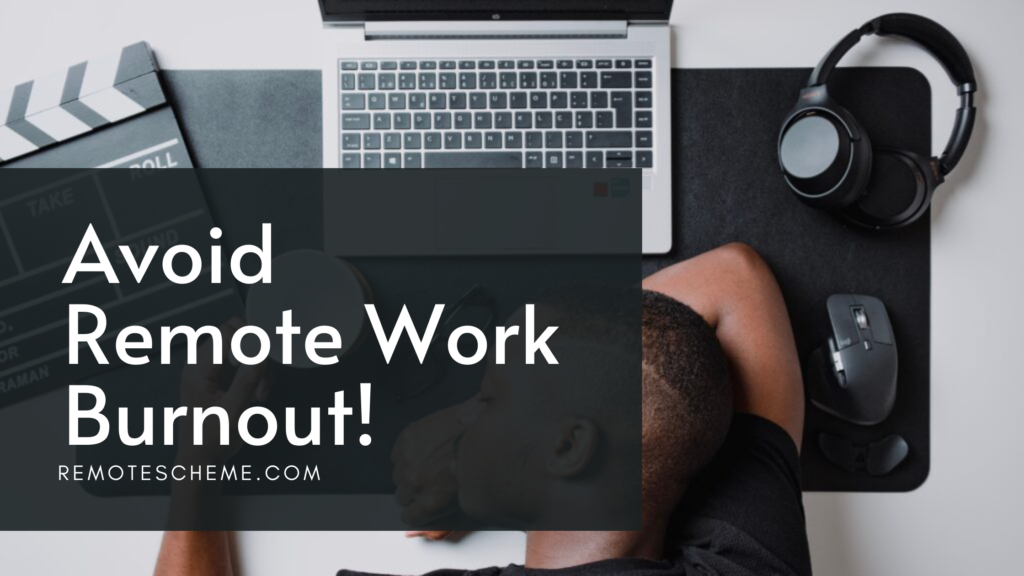Working from home offers you a lot of benefits. You can spend more time with your family, save money on gas and clothes, and even work in your comfiest pajamas!
Yet, this is precisely where the problem lies—most of the lines and boundaries we had established over time blur when you’re home.
You might find yourself working late into the night most days or taking your work with you on vacations.
Sometimes, it’s the exact opposite! For instance, you might be too relaxed or distracted at home to do real work.
As a result, learning how to maintain a work-life balance when working remotely can be detrimental to your health and business.
So, in today’s post, we’ll give you some tips on maintaining a healthy equilibrium between work and personal life. Let’s begin!
7 Tips for Maintaining Work-Life Balance
The clash between overworking and underworking can be a real issue for some remote workers.
If you’re one of them, take a look at our next few tips to strike the right balance:
#1. Define Your Work-Life Balance
Before we dive too deep into what you should and shouldn’t do, we need to discuss what’s the perfect balance for you.
For starters, there’s no right or wrong answer when it comes to this question.
It’s just that the work-life balance is a very personal thing, and what works for others might not work for you.
So, you need to take a step back, observe your life, and ask yourself the following questions:
- What are your priorities?
- How do you want to spend your time?
- Do you have a favorite pastime hobby?
- Do you need time for yourself?
- Do you need time for your family and friends?
- Is your work taking too much of your time?
- Is your personal life taking too much of your time?
Answering these questions will help you establish a program that’s best suited for your needs.
In addition, it’ll give you a sense of direction and responsibility, making it harder for you to procrastinate.
Most importantly, remember to step away from perfectionism and focus on the process. If you try to do everything all at once, you’ll feel overwhelmed and frustrated when very little gets done.
So, break your goals and tasks into smaller, more manageable chunks—start from your basic needs, then aim for your ideal work-life balance.
#2. Don’t Neglect Your Health
Many remote workers assume that planning all the little things and committing to a schedule means everything will go smoothly. Sadly, we wish that were true.
The key aspect most remote employees forget is their health—mental and physical. After all, the work-from-home lifestyle became popular within the last decade or so, meaning most people are new to the game.
Nobody expected the loneliness that crept up on them or the odd fatigue that came every day, even when they felt most relaxed.
The lack of genuine human interaction and activity led to many health problems that lay dormant before.
So, to overcome this problem, you’ll need to follow a few steps.
First, make sure you sleep at least 8 hours daily. Sleep, in essence, is your body shutting down to repair and maintain your health.
Secondly, put in some time to exercise and move around. This doesn’t mean you’ll need an entire workout routine!
Just something simple to replace the fact that you’re no longer walking around the office or commuting.
If you’d like, you can make that exercise a short walk under the sun to get some fresh air and a change of scenery!
#3. Treat Yourself In The Morning
Just because you’re a remote worker doesn’t mean you’re supposed to roll over from your bed and onto the laptop. In fact, you’ll need to treat it like a regular workday—minus the rush!
You’ll need to wake up, shower, and prepare a nutritious and delicious breakfast with a sweet cup of coffee.
Basically, use the extra time you got from not having to commute to treat yourself before work. You can also do some yoga, meditate, or even read.
Whatever that’ll help kick the day off, just do it! You’ll feel more productive throughout the day and less tempted to procrastinate a task.
But remember, just because you’ve got some extra time doesn’t mean you’re supposed to have a lie-in—even if it’s tempting.
Staying in bed longer than usual can leave you feeling sluggish and groggy, affecting the rest of your day.
#4. Prepare A Special Work Routine
After you’ve finished treating yourself in the morning, it’s time to start the work routine! Of course, the first thing you need to do is get dressed.
We know, we know, it’s very disappointing to many workers that they can’t wear some of their comfiest pajamas.
However, wearing your home attire should be restricted to relaxing, homey times. If you start wearing your pajamas while working, it can make you feel like you’re not supposed to be doing any work.
Actually, they could do the complete opposite and make you feel like you’re supposed to work even after you’ve finished!
In a way, it works like a Pavlov effect— e.g., classical conditioning. A constant trigger will eventually elicit a particular reaction.
In this case, the trigger is your clothes, and the response could be either excessive relaxation or nervousness from lack of work, depending on the situation.
Hence, the best course of action here is to have an outfit or two just for work.
After putting on your new work clothes, you can head off to your office. And yes, we meant to say office!
Another thing that you’ll have to ensure in your work routine is that you don’t work from the bed or couch. Just like your clothes, these spots are supposed to be for relaxing and lounging.
So, create a workspace separate from the rest of your home where you can finish your tasks peacefully. This way, you won’t be tempted to roll over and take a nap or open the TV!
#5. Stick To A Schedule
Of all the tips on our list, sticking to your work schedule is probably the most important.
That’s because, on occasion, you can be a bit lenient regarding your morning or work routine.
However, messing with your work schedule is a recipe for disaster. You see, most of us aren’t used to the freedom and flexibility of working from home.
So, once you realize you can work whenever, it’ll start to feel tempting to do just that. As a result, you might find yourself procrastinating, working late, or failing to meet deadlines.
Also, it starts slowly and without you noticing! First, you work just a half hour later than usual, then an hour, and then it snowballs.
Hence, you’ll need to create a schedule similar to the one you had at the office.
Write down when you need to start working when you’ll finish, and all the little tasks you must accomplish in the middle.
Lastly, you can use online tools like Trello or Asana to help set reminders and track your workflow.
#6. Adjust Your Tools To Reflect Your Hours
When you’re at the office, it makes sense to help a co-worker in need. Most of the time, you’ll just drop what you’re doing and lend them a hand.
Nonetheless, this isn’t always an option when you’re working remotely. Of course, you can help when you’re available, but most of the time, you’ll notice a scheduling conflict.
Some remote workers prefer to finish their tasks in the morning, while others wait until evening to start their work! Unfortunately, this leaves most people in a moral dilemma.
Because you don’t see your colleagues as often now—if at all—you’ll always feel guilty if you don’t help out.
Nonetheless, this isn’t a good enough reason to respond to e-mails after work, on weekends, or when you’re busy!
So, start setting some boundaries with your co-workers by letting your communication tools reflect your available hours.
Start by using a shared online calendar to show everybody when you’re open for help and what your schedule is like.
This way, your colleagues can plan meetings around your availability, and you won’t feel guilty about not responding to e-mails when you’re out with friends.
#7. Take An Actual Lunch Break
If there’s one thing we’re trying to get across to you, it’ll be treating this remote job as an actual office job.
Therefore, just like a traditional office job, you’ll need to wind down from your day and take a relaxing lunch break.
Usually, your lunch break should last anywhere from 30–60 minutes. The most important thing to remember is to never eat in your working space or while sitting in front of the laptop!
Why, you might wonder?
Because it’s incredibly unhealthy for you that even while you’re on your break, you’re still surrounded by work!
It’ll be hard to get out of the “work mode” while eating, and as soon as you start working again, you’ll feel grumpy and tired, as if you never took a break.
Hence, the best option here is to leave anything related to work on your desk and head into the kitchen!
In there, take your time to create a lovely meal that’ll allow you to unwind and restore much-needed energy for the rest of the work day.
Final Words
So, did our little guide help you learn how to maintain a work-life balance while working remotely? We sure hope it did!
Preserving this balance is incredibly important to both your health and career.
To give you a quick recap, all you have to do is define the perfect work-life balance and build up from there.
Once you do that, you’ll be able to establish a schedule, stick to it, and, hopefully, enjoy a more balanced life!




